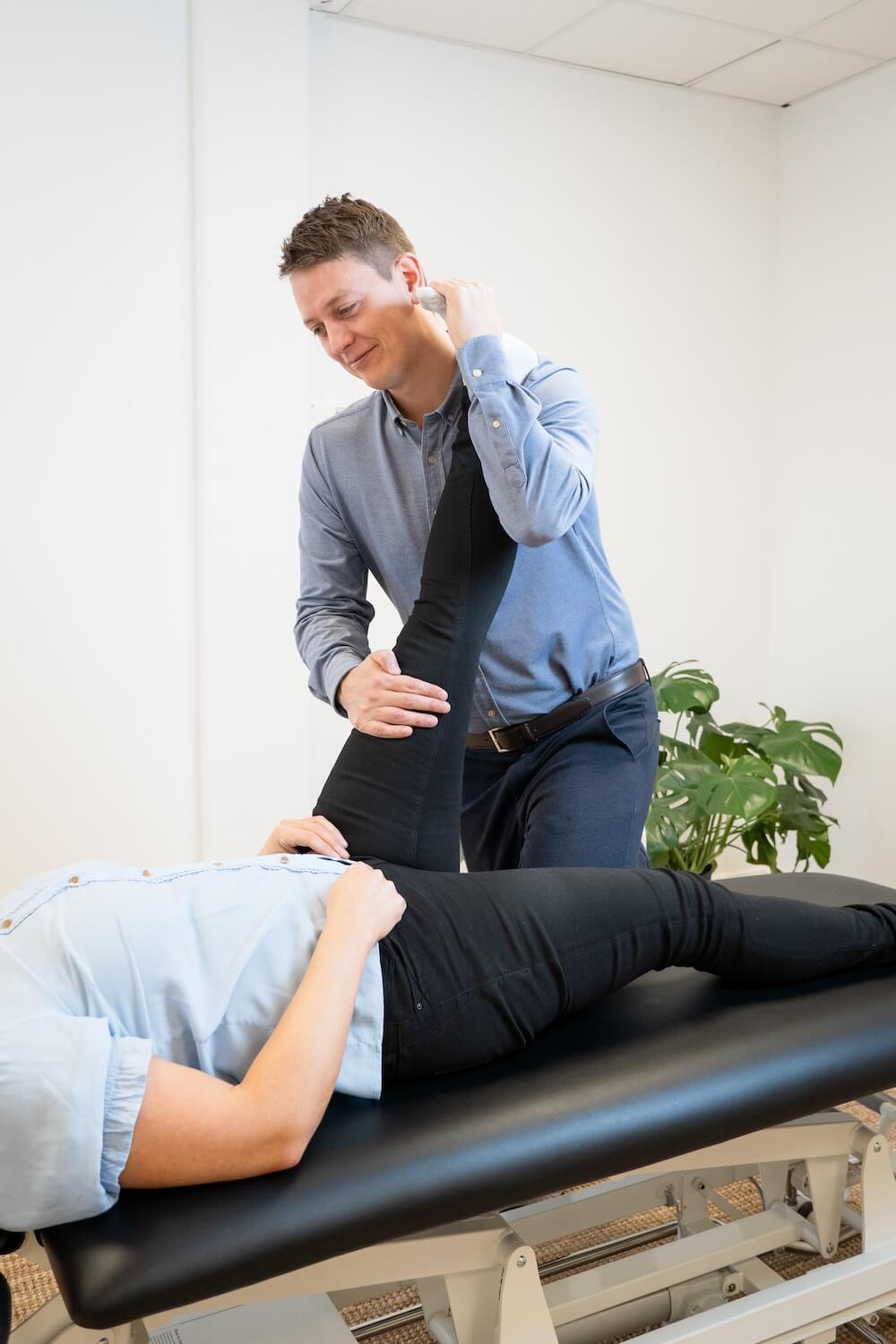We treat
Metatarsalgia
Learn more about sunken forefoot
What is a sunken forefoot?
There are several names for a sunken forefoot – flatfoot, forefoot drop, pes planus transversus and the medical term, metatarsalgia, which directly translates to pain in the joints and joint heads in the base joints of the toes.
A sunken forefoot or sunken metatarsal bones is a syndrome in which one or more bones in the forefoot have changed their original position. This often leads to the muscles and tendons in the foot becoming more easily overloaded.
Jump to section [Vis]
Degenerative condition in the forefoot
All of the above terms cover a degenerative condition in the forefoot; i.e. a worsening of the condition of the foot over time, where connective tissue and ligaments between bones and joints in the forefoot collapse, i.e. the front arch collapses, so that there is an increased and inefficient overload of joint heads and nerves in the forefoot.
Source: Hospitalsenhedmidt.dk
A normal foot has a “cross arch” under the forefoot, which means that when you take a step, you first put pressure on the foot pad under the big toe and under the little toe. This creates a certain elastic effect, where the foot pads on the three middle toes move downwards under load and “up into place” again when the foot is lifted.
With a sunken forefoot, the three middle toes are loaded first.
Most people who suffer from sunken forefoot have a so-called “soft/rectifiable” forefoot drop. This means that by applying light pressure under the foot (further up the foot than under the actual drop), the position of the foot and toes can be straightened.
Others have a “fixed” position, where they cannot immediately lift the foot into place. This is most often due to the toes not being able to get into place and therefore pressing the joint heads down.
Source: Regionshospitalet Gødstrup

Symptoms of sunken forefoot
Forefoot drop causes:
- Increased pressure on the skin under the three middle toes, which can form calluses that can be tender.
- Increased pressure can occur on some of the nerves that go to the toes. This can cause a numb feeling or direct pain.
- Some people may also feel as if they are stepping on a “lump” in their foot.
However, there is nothing physically there—it’s just a sensation. - A tightening can occur of both the flexor and extensor tendons of the toes.
This pulls the toes up into the so-called hammertoe position a position that can cause pressure on the tip of the toe, as well as on top of the toe.
Source: Regionshospitalet Gødstrup
The symptoms of sunken forefoot are typically pain under the joint heads of the 2nd, 3rd and 4th toes. The pain occurs especially when starting an activity. During the activity, the symptoms may be relieved slightly, only to return after the activity, and sometimes also at night or at rest in general.
The gait can be described as walking on a crumpled sock, or as having a stone in the shoe. The pain can fluctuate greatly, from mild discomfort to very severe pain.
There is rarely anything to see in the ball of the foot, but there may be general redness, swelling and slight warmth under several joint heads.
Source: Regionshospitalet Viborg
Causes of the disorder
Causes of sunken forefoot may include dysfunction in the hormonal system (e.g. pregnancy or metabolism), repetitive heavy lifting, arthritis, reduced strength of the foot muscles or stress on the nervous system of the foot.
- There are several causes of the disorder:
- The cause may be hereditary. If your parents have/had wide flat forefeet, this may be the cause of the condition.
- Lack of flexibility and tight hamstrings place high stress on the forefoot and thus pose a risk.
- Increased strain from standing/walking work on hard, cold floors also predisposes to the condition.
- Being overweight is an aggravating factor, as well as extreme stress, such as long-distance running and other extreme sports.
- It has never been documented that high-heeled shoes cause forefoot drop in themselves, but there is no doubt that it can make it worse.
- Multiple pregnancies also increase the risk of women developing forefoot drop.
- In other cases, pain in the forefoot is due to the joints being dislocated or partially destroyed by osteoarthritis, rheumatoid arthritis or synovitis.
Source: Aleris.dk

Arthritis and sunken forefoot
Arthritis can cause foot problems – If the doctor suspects that the foot problems are due to arthritis, you will usually be referred to a rheumatologist.
Arthritis can occur in the feet as well as in other joints in the body. It can cause pain and reduce mobility in the foot.
For example, bunions can form on the feet, and you can get misaligned toes and arthritis. This can lead to hard skin, corns and nails that either thicken or become ingrown.
In that case, you may need foot treatment, and you will probably be referred to a podiatrist.
Treatment of the problem
The first step in treating sunken forefoot is to determine the cause of your pain. Different cases may require different treatments, but your doctor/therapist will likely recommend a conservative approach as the first step in your treatment plan.
You can try self-medication with anti-inflammatories, which can include ice and oral anti-inflammatory medications, such as Panadol and ibuprofen. These may provide temporary relief from pain, but do not address the underlying cause of your condition.
Shoe inserts are often used as part of conservative treatment. Which insert to use usually depends on the condition. You can read more about this further down in the article.
In some cases, your doctor may give you injections, depending on the cause of your pain. Injecting a medication blocks the transmission of pain through nerves in your foot. Risks can include permanent numbness in areas of your foot, so you should always discuss the indications and risks of this treatment with your doctor.
Surgery is considered in cases where conservative treatment does not have the desired effect. The surgery may involve realigning the bones in your feet. Parts of the bones may be removed, and ligaments or tendons may be cut in an attempt to reduce weight bearing on the metatarsal bones. Again, this should be carefully considered and the indications and risks discussed with your doctor.
Source: Remond.dk

What footwear should you use for sunken forefoot?
Good fit, mobility and support characterize a good shoe. The shoe should allow movement while supporting the foot.
Source: Fysio.dk
Footwear size
- The length should be 10-15 mm longer than the foot (the foot slides forward about 5 mm).
- Children should have 7-10 mm as a growth allowance.
- There should be room to spread the toes.
- There should be a straight inside that allows room for a straight big toe.
- The toe cap should be high enough to allow room for the toes to move freely (they are pressed upwards during movement).
- Buy shoes at the end of the day – that’s when your feet are largest.
- The best way to treat forefoot flatfoot is to wear footwear with a very stable sole, without being completely stiff (i.e. neither clogs nor mountain boots). You need modern running/hiking shoes that don’t give much when you squeeze the shoe hard in the longitudinal direction, but are made of a material that provides shock absorption.
Heel height of footwear
- Heel height 1-2 cm. The forefoot is stressed by high heels and can cause subsidence and pain in the long term.
The sole of the footwear
- Must be soft and slightly flexible to maintain optimal muscle function and mobility.
- Shock absorption is an advantage.
Forefoot pad
If you have a soft/flexible foot, you can use a sole with a so-called forefoot pad. This is a sole with a cushion that lifts the foot into place when under load. It is important that the sole fits the foot. A sole with a built-in pad works better than a so-called loose pad.
At the same time, it is an advantage if the shoe has a removable insole. This makes it possible to incorporate a forefoot pad with good firmness, which is the alpha and omega of the treatment.
Correct placement of the pad is extremely important – it must be placed exactly in the middle under the forefoot.
“loose” pad
The size of the pad listed on the package typically indicates the height of the pad. You should start with what is equivalent to a medium and work your way up.
The placement and size are rarely perfect on the first try. You have to work on it.
Once the pad is placed and placed in good shoes, all problems are unfortunately not solved. It takes time for the body and foot to get used to the changed balance.

Butterfly insole and outsoles
If the foot is stiff/fixed, a pad has no effect – quite the opposite. Here you need an insert that makes room for the sinking. Such an insert is also called a butterfly insole by some. It must be made especially for you.
Some people benefit from a so-called “outsole”, such as those found on MBT shoes. This allows you to “roll” forward over your foot and does not put the same strain on your joints. Many people have difficulty getting used to this, and unfortunately it does not help everyone.
Source: Regionshospitalet Gødstrup
Support and closing mechanism
The heel cap must be stable and fit tightly around the heel.
The heel cushion should form a cup, possibly widened with a slight elevation in the arch, so that the foot does not slide forward unnecessarily in the shoe.
The opening in the shoe should be as small/short as possible, so that the foot is held firmly.
There must be solid material from the sole up to the closing mechanism to ensure stability.
The closing mechanism should be adjustable – either with a lace or Velcro
Typically, you will have worsening of the discomfort for the first 3 weeks before you experience slow relief. It is important that you have patience. In the long run, pads provide really good relief.
Fortunately, for many, the discomfort decreases over time (years). However, some must use pads for the rest of their lives.
Source: Hospitalenheden.dk
Osteopathy and sunken forefoot
Osteopathy looks at the problem holistically and tries to find causal relationships that may be important for the development of sunken forefoot.
Osteopathy, for example, treats the digestive and organ systems so that the metabolism functions better, promotes blood supply to the feet to promote healing, and optimizes the nervous system so that tension in muscles and connective tissue is reduced.
In addition, osteopathy naturally works with the biomechanical problems in the lower back, pelvis, hips, knees and in the foot itself if this is relevant. As osteopaths, we will also advise you on what things you can do yourself to solve your problem, including advice on exercises, diet, stress levels, sleep, etc. which can also have an impact on sunken forefoot.

Can you train out sunken forefoot?
Fortunately, it is not impossible to correct the damage caused by sunken forefoot. You can help yourself by, among other things, avoiding high heels, getting a lift from a small cushion (a forefoot pad) placed in the shoe, having insoles made with forefoot lift, or doing exercises where you work on the mobility and strength of the foot, both by wearing sensible footwear and through specific exercises.
Keep your feet strong and flexible
It is important to keep your feet strong and flexible. If you have problems with your feet, it can affect your entire body and cause problems in your knees, hips, back, neck and even headaches.
Be aware of pain and discomfort
If you have problems with your feet – pain and/or discomfort – you should see a doctor, physiotherapist or osteopath. If you feel pain or discomfort when performing a particular foot exercise, stop immediately and move on to the next foot exercise.
Exercise your feet daily
To achieve the best results, you should do foot exercises once a day. A good idea is to do the exercises while you are still sitting on the couch in the evening, or at the dining table after dinner.
Source: Gigtforeningen.dk
Exercises for sunken forefoot

Often related causes
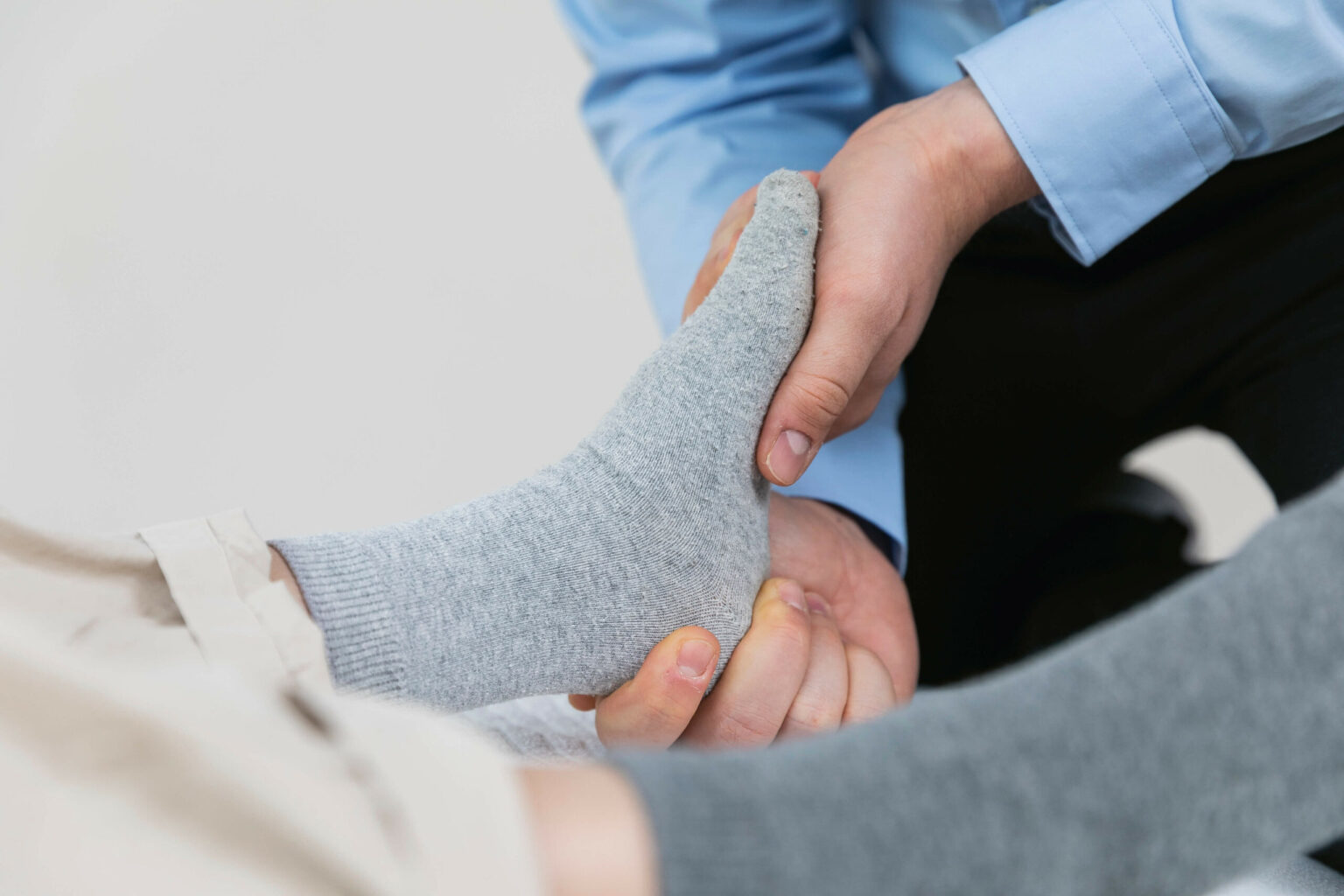
Tenosynovitis in the foot
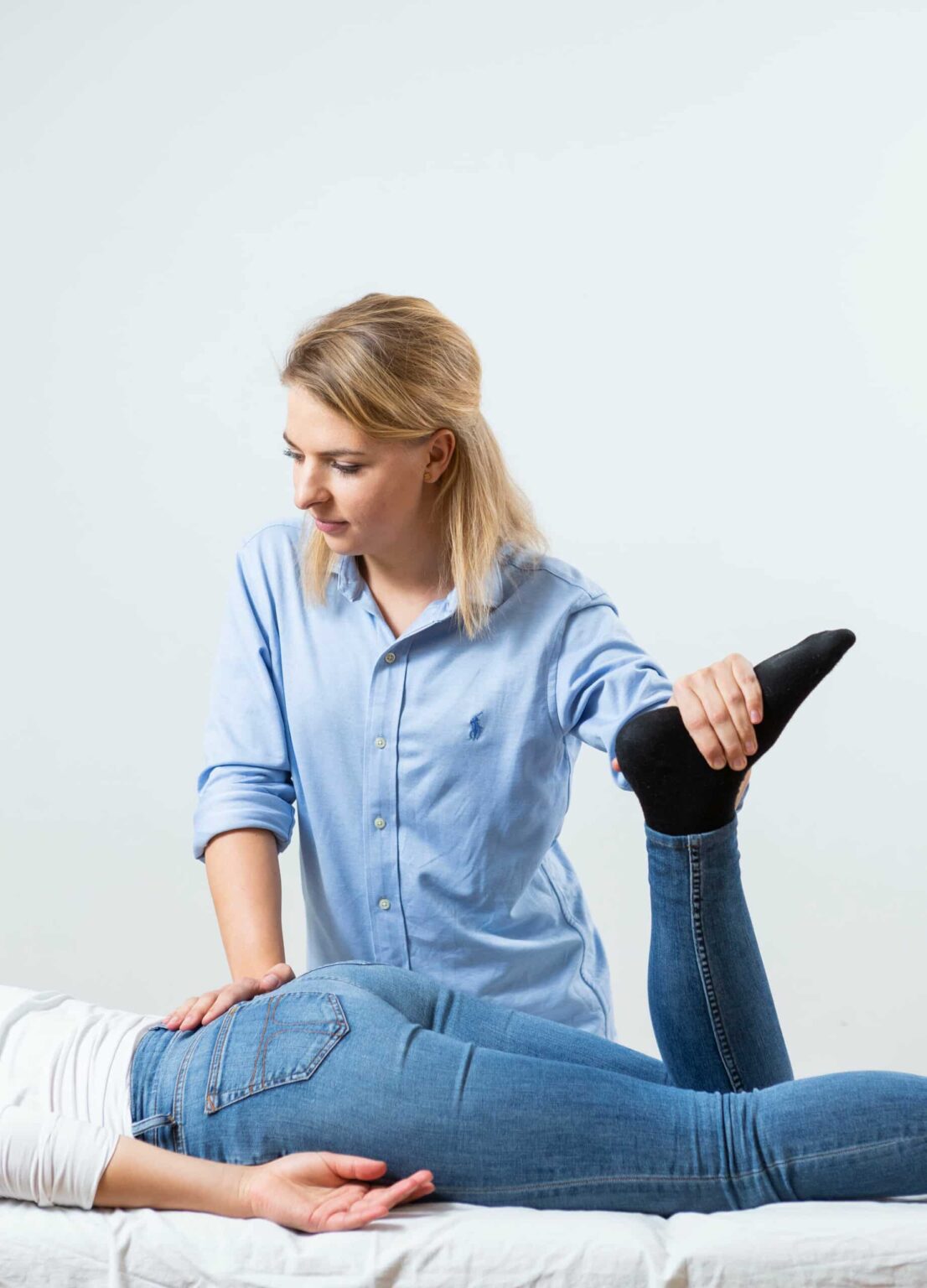
Swollen ankles

Sunken forefoot
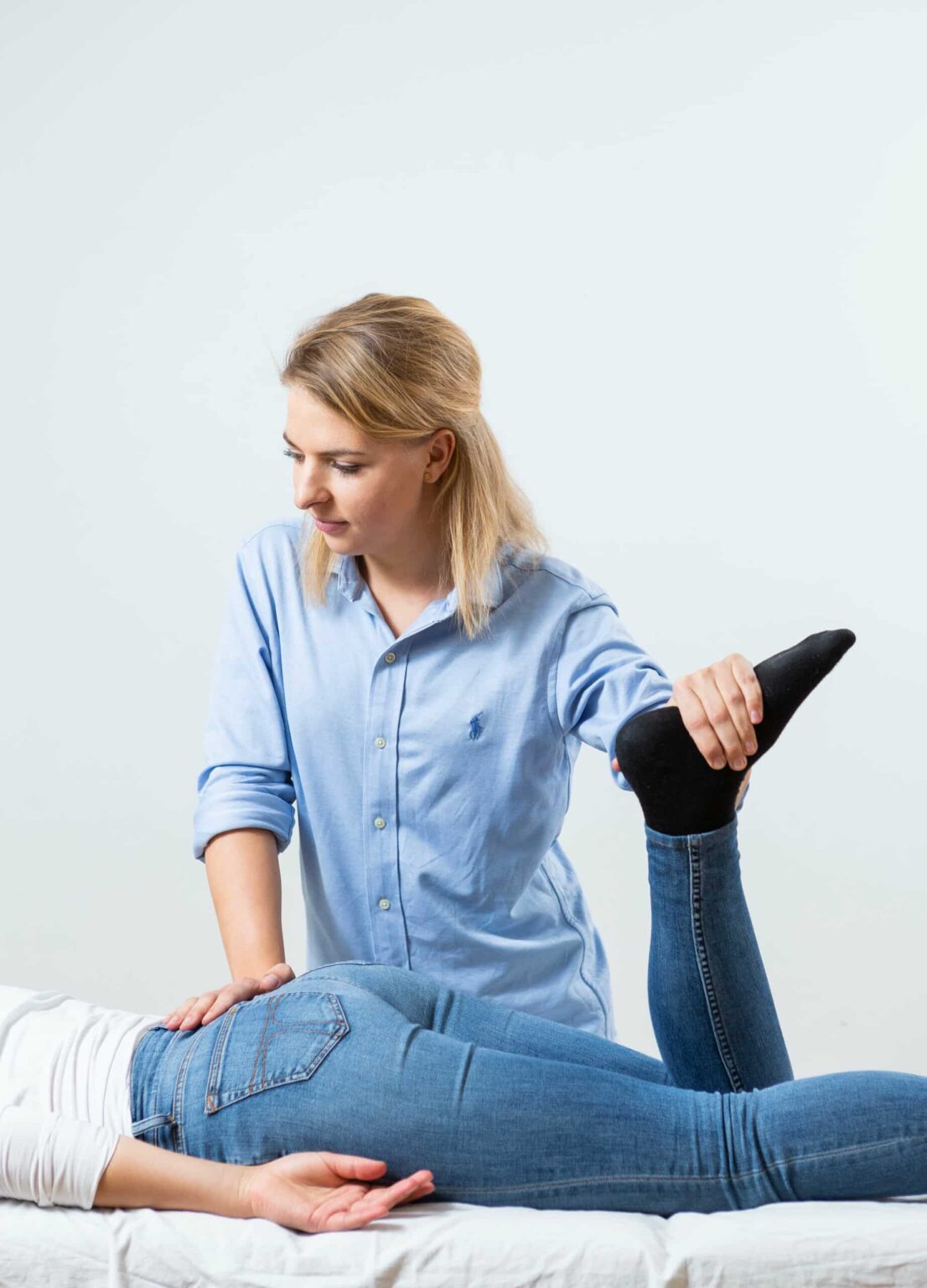
Flat Foot (Pes Valgus)
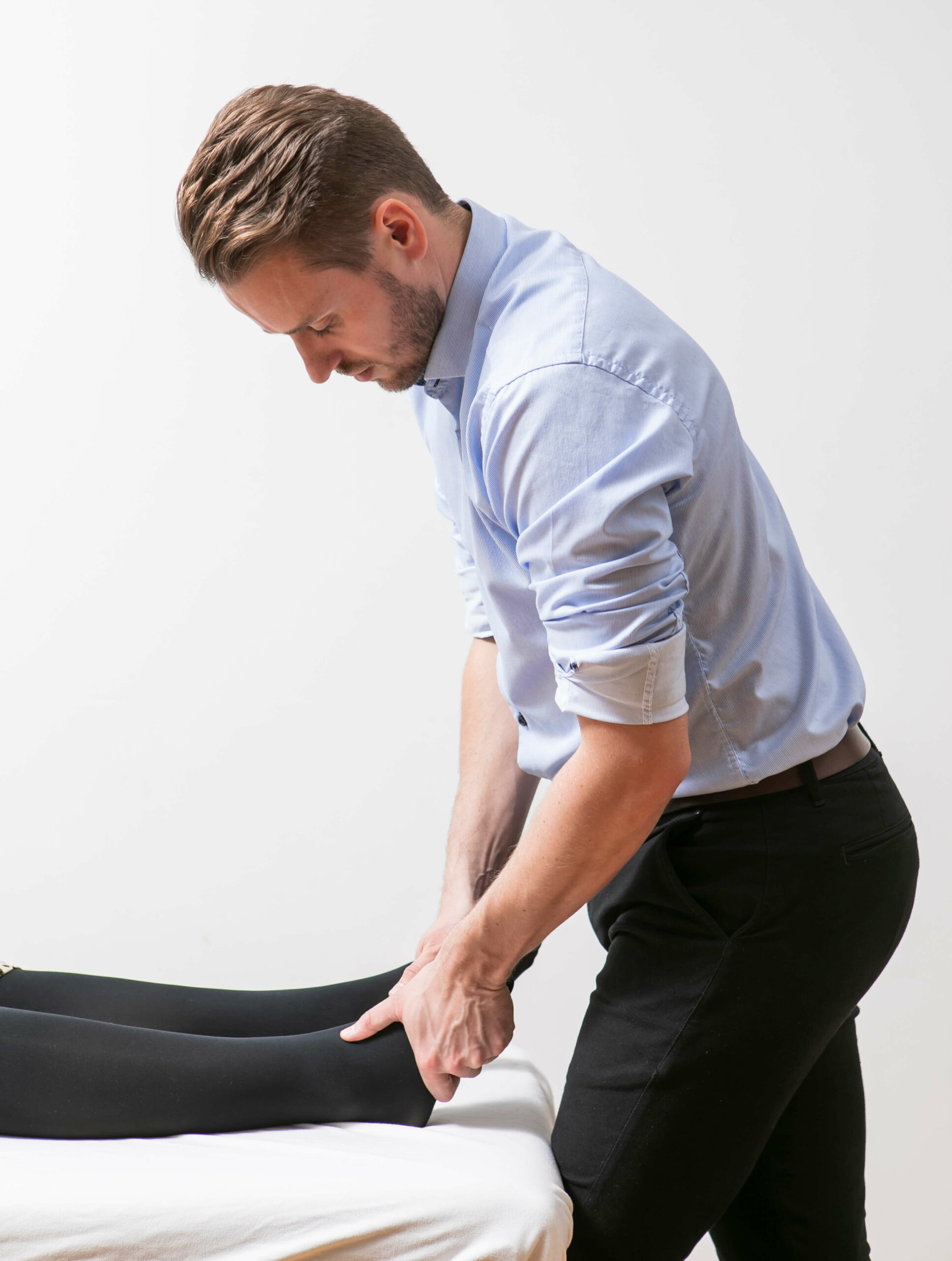
Ankle and foot pain
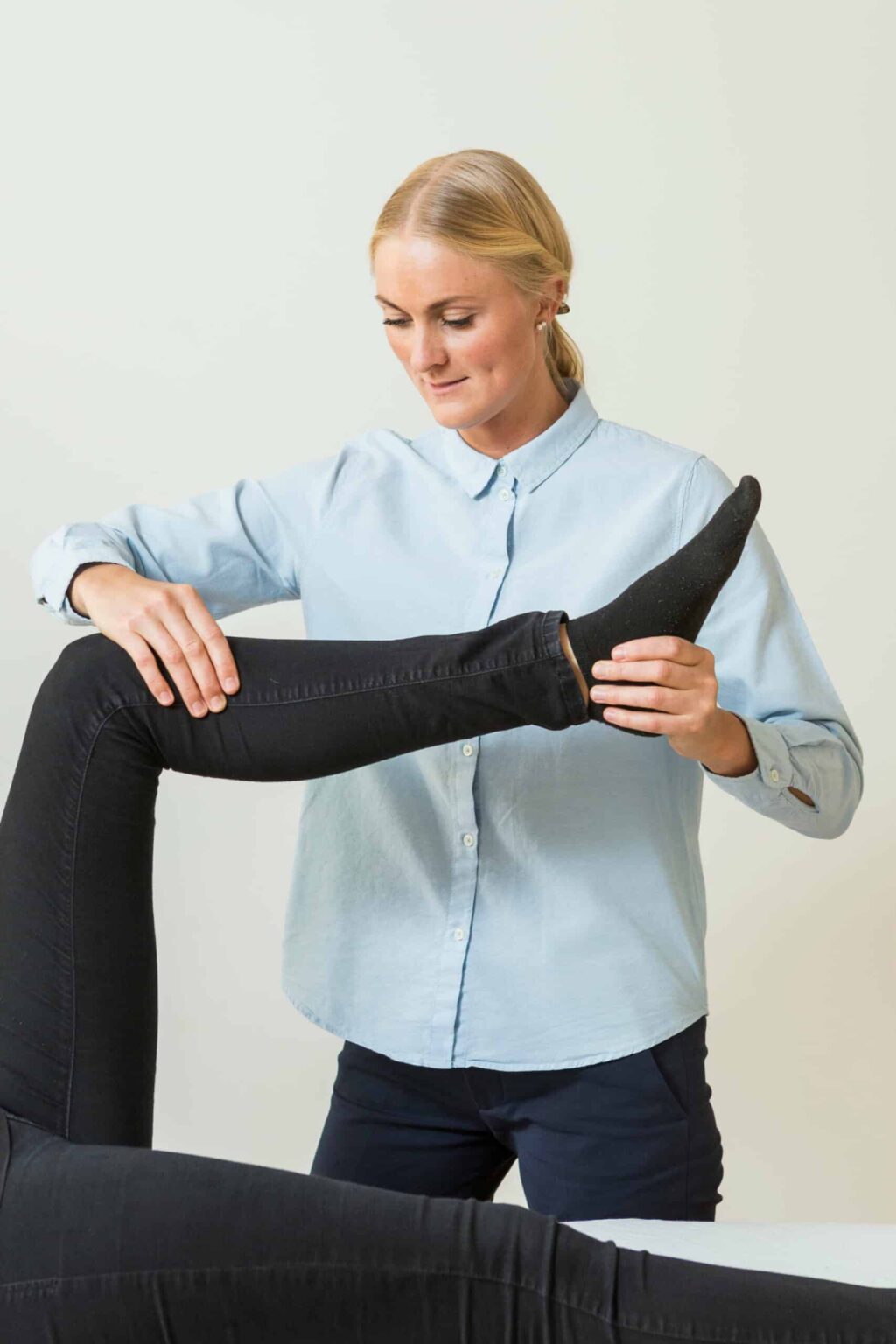
Heel spur
